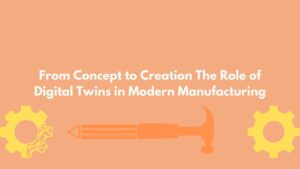Introduction
Efficiency is the backbone of a successful manufacturing operation. In today’s competitive market, companies must produce high-quality goods at a lower cost while meeting tight deadlines. Achieving this balance requires a focus on efficiency across all levels of production, from the factory floor to supply chain management. This guide explores how manufacturers can optimize efficiency, the tools and techniques available, and real-world examples of success.
The Importance of Manufacturing Efficiency
Efficiency doesn’t just cut costs—it improves product quality, increases customer satisfaction, and enables companies to scale operations.
Key Benefits:
- Lower Operational Costs: Efficient processes reduce waste, energy usage, and labor expenses.
- Faster Time-to-Market: Streamlined workflows allow products to reach customers more quickly.
- Enhanced Employee Productivity: By minimizing redundancies, employees can focus on value-added tasks.
Strategies for Enhancing Efficiency
- Lean Manufacturing Practices
Lean principles aim to eliminate all forms of waste, including overproduction, defects, and waiting times.- Value Stream Mapping: A detailed visualization of production steps to identify inefficiencies.
- Kanban Systems: Visual boards that manage workflow and ensure inventory is only replenished when needed.
- Automation and Robotics
Automation is a game-changer for repetitive or dangerous tasks, freeing human workers for complex problem-solving.- Collaborative Robots (Cobots): Work alongside humans to improve safety and productivity.
- Advanced Machine Vision: Detect defects and ensure precision in quality control.
- Real-Time Data Analytics
Using IoT sensors, manufacturers can monitor production metrics and adjust operations instantly.- Case Study: A car manufacturer reduced downtime by 30% using predictive maintenance tools.
- Workforce Development
Employees are a manufacturer’s greatest asset. Continuous training ensures they’re skilled in using the latest tools and technologies.- Programs: Offer certifications in lean methods, machine operation, or data analytics.
- Employee Incentives: Reward innovative ideas that improve processes.
Real-World Success Stories
- Toyota: Pioneered lean manufacturing, reducing waste and improving vehicle quality.
- Amazon: Optimized warehouse operations with robots, reducing shipping times drastically.
Conclusion
Efficiency in manufacturing is an ongoing pursuit. By adopting proven strategies and investing in cutting-edge technologies, companies can achieve operational excellence, enhance customer satisfaction, and boost profitability. In the face of growing competition, efficiency is the ultimate differentiator.









